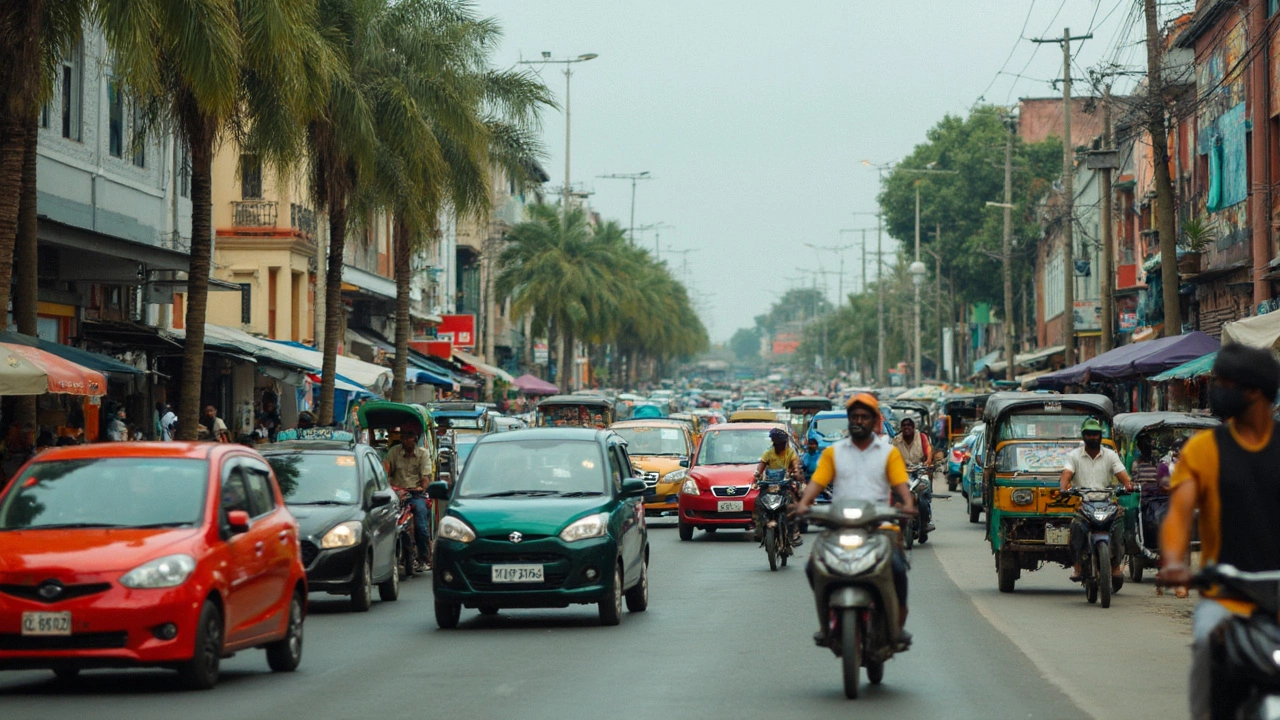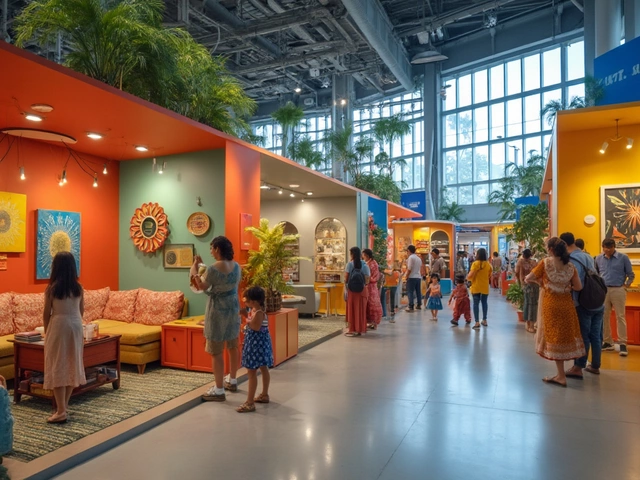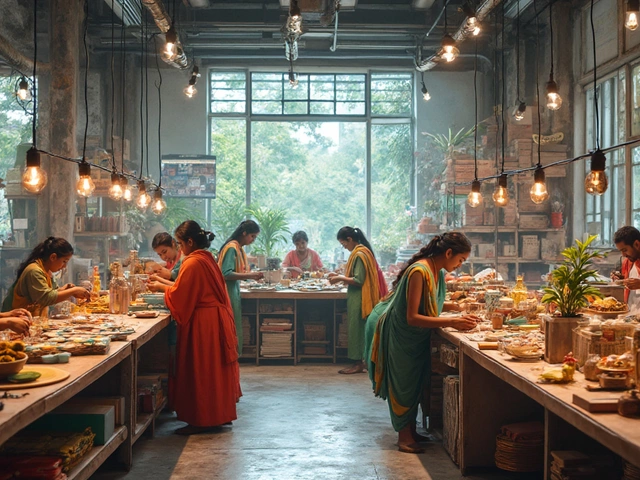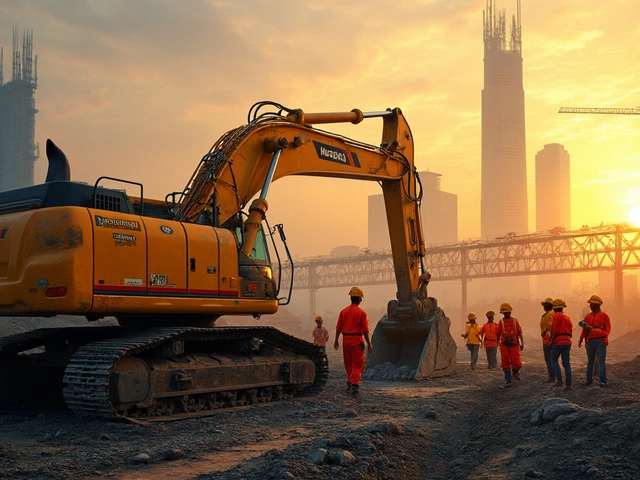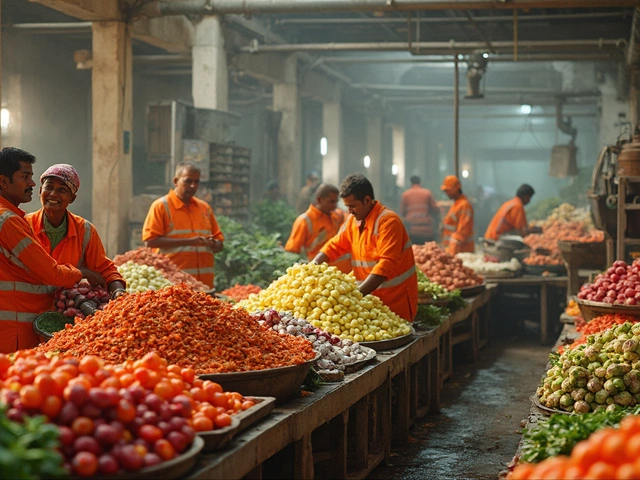Walk around any busy street in Colombo, and you’ll see plenty of shiny cars. But did you ever wonder—are these actually made in Sri Lanka? Here’s the honest answer: Sri Lanka doesn’t really produce its own cars in the way places like India or China do. Most cars on the island come from other countries, then get assembled locally, or are just imported ready to use.
If you’re dreaming of a proper Sri Lankan car brand, you’ll come up empty. Local companies do put together some vehicles, but that basically means connecting parts made elsewhere. No full-on Sri Lankan-made car is rolling off a big production line. So, if you’re hunting for a car with a “Made in Sri Lanka” badge, it’s just not happening right now.
This might be a letdown if you compare it with India, where local giants like Tata and Mahindra pump out millions of cars each year. Sri Lanka’s market is just too small, and it’s tough to get car parts or keep costs low enough to compete with big exporters. If you’re in Sri Lanka and thinking of buying a vehicle, almost everything you’ll see on offer is an international brand, either assembled locally or shipped in fully built. That shapes what you can buy and what you pay—so let’s get into the details.
- Sri Lanka’s Car Industry: An Overview
- Local Assembly vs Manufacturing
- Popular Car Brands and Imports
- Why Sri Lanka Doesn’t Compete with India
- Tips for Buying Cars in Sri Lanka
Sri Lanka’s Car Industry: An Overview
Sri Lanka's car scene isn’t what you’d call huge, and it’s totally different from giants like India or Japan. For starters, Sri Lanka does not have any major car manufacturing plants. The closest it gets is “vehicle assembly,” which is basically putting together knocked-down kits shipped from other countries. That means most of the value, design, and tech all come from somewhere else—it’s not true car making from scratch.
If you’re thinking about big names like Sri Lanka cars or local brands, none really exist. Almost every car rolling on Sri Lankan roads is from brands like Toyota, Suzuki, and Nissan, which are brought in from Japan, India, or used imports from Europe. For a long time, Sri Lanka relied heavily on vehicle imports. In fact, around 90% of its cars are fully built units, not locally made or deeply assembled here.
The government has tried to boost the local industry now and then, but success has been limited. Sometimes, they put big taxes on imported car production to try and help local jobs or the economy. But with the country's small size and limited resources, setting up serious automobile manufacturing isn’t realistic at this point.
Here’s a quick look at how things stand compared to the heavyweights:
| Country | Cars Produced (2023) | Major Local Brands |
|---|---|---|
| Sri Lanka | Less than 1,000 (mainly assembly jobs) | None |
| India | Over 4 million | Tata, Mahindra, Maruti Suzuki |
| Japan | About 8 million | Toyota, Honda, Nissan |
So if you’re eyeing automobile manufacturing in Sri Lanka, keep your expectations low. This industry is really just about assembling and importing, with no full-scale car production on the level you see in India. Local businesses mostly focus on selling, repairing, or customizing vehicles, not creating them from scratch.
Local Assembly vs Manufacturing
When people talk about Sri Lanka cars, there’s often confusion between ‘local assembly’ and ‘manufacturing.’ They aren’t the same thing—and that matters if you care about where your car really comes from.
Here’s how it actually goes down in Sri Lanka: most vehicles arrive as ‘knock-down kits.’ Basically, these are cars in pieces—made in places like Japan, India, or China. Local companies, like Micro Cars and Ideal Motors, put these pieces together in Sri Lankan factories. But the key parts, like engines and gearboxes, are all imported. So, while jobs and some value get added locally, the real engineering is all done outside the island.
If we’re talking actual manufacturing, that means building a car from scratch using parts made right there—frames, engines, the whole deal. Sri Lanka doesn’t do that. No homegrown engines. No factories building body panels from raw steel. It’s way different from what happens in the Indian auto industry, where everything gets handled under one roof—from making frames to entire engines.
Local assembly has a few upsides. It’s faster and a bit cheaper than importing fully built cars (thanks to lower taxes on assembled units). It also creates jobs here and there. On the downside, the selection is limited. You won’t get the same variety or technical innovation you see in big manufacturing hubs. If you’re a car buyer, trying to get after-sales support for less common imported brands can also be a headache.
Here’s a look at how local assembly compares to full manufacturing in a nutshell:
| Aspect | Local Assembly (Sri Lanka) | Full Manufacturing (India) |
|---|---|---|
| Production process | Assembly from imported kits | Full build from raw materials |
| Key components made locally | No | Yes |
| Job impact | Some, mostly assembly | Massive, across all factory jobs |
| Cost savings | Lower taxes, less shipping cost | Economies of scale, export focus |
| Choice for buyers | Limited | Wide |
So, next time you hear about a ‘Sri Lankan-made’ car, you’ll know what’s really going on—assembled yes, but true manufacturing still belongs to the big players like India or Japan.
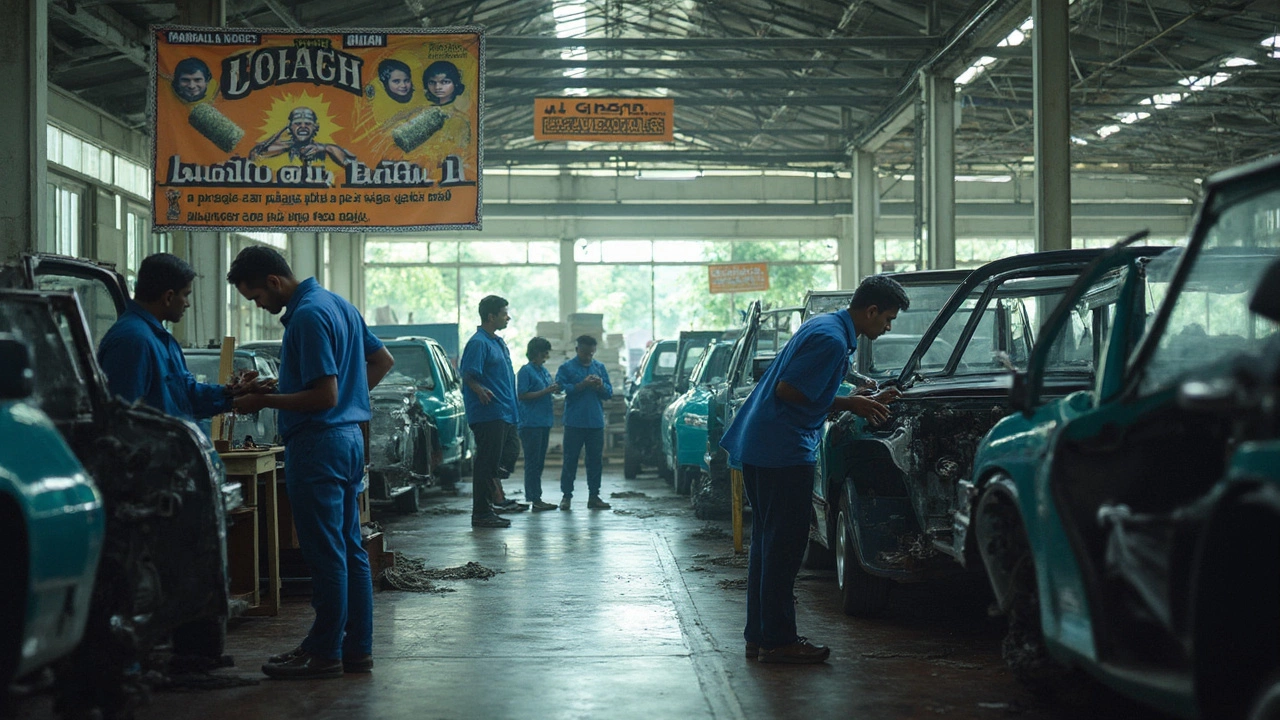
Popular Car Brands and Imports
When you walk through a parking lot in Sri Lanka, you’ll notice the same names pop up over and over. The Sri Lankan market is packed with cars from Japan, India, and a few from Europe. You won’t spot a Sri Lanka cars badge anywhere because the country relies on imports and local assembly—not homegrown models.
The most common brands you’ll see are Toyota, Suzuki, Honda, and Nissan. Japanese cars dominate because they tend to be reliable, hold their value, and parts aren’t too tricky to find. Suzuki Alto especially is like the go-to urban runabout—small, easy on fuel, and not too pricey.
Indian car companies, especially Maruti Suzuki (yes, it’s technically both Japanese and Indian), Tata, and Mahindra, have a solid share in the market too. These are favorites mainly because their prices match what most local buyers are willing to pay, and servicing them is pretty straightforward. Here’s a rough breakdown of what’s most popular on Sri Lankan roads:
- Toyota – Models like the Prius and Axio are everywhere, loved for their durability.
- Suzuki – The Alto, WagonR, and Swift get snapped up for city driving and affordability.
- Nissan – The Leaf electric car made some waves with buyers interested in lower running costs.
- Honda – Fit and Vezel are popular among young city folks.
- Tata and Mahindra – Known for their workhorse appeal, good for taxis and transporting goods.
Grey imports—basically used cars brought in from Japan—are a huge piece of the market too. Many Sri Lankans prefer these because they’re often cheaper and in pretty good shape. In fact, a big chunk of the car market (over 60% at times) comes from these Japanese imports, according to local dealer numbers. Crazy, right?
It’s not just gasoline cars either; electric and hybrid models are showing up a lot more often than before, especially since fuel prices have gone up. Toyota and Nissan lead here, but you might spot a stray Tesla or two—though they’re rare and pretty expensive.
High import taxes in Sri Lanka mean cars are usually more expensive than what you’d pay in India. This pushes more people to pick smaller, fuel-efficient cars to save in the long run.
There isn’t a single car production plant making cars from scratch in Sri Lanka, so the only options in showrooms and resale lots come from imports, or assembly lines that just put together kits from abroad. That’s why the variety depends so much on what’s allowed, taxed, or locally assembled at any given time.
| Brand | Main Source Country | Popular Models |
|---|---|---|
| Toyota | Japan | Prius, Axio, Aqua |
| Suzuki | India/Japan | Alto, WagonR, Swift |
| Nissan | Japan | Leaf, X-Trail |
| Mahindra | India | Bolero, KUV 100 |
| Tata | India | Indica, Nano |
If you’re thinking of buying a car in Sri Lanka, remember: you’ll be choosing from a lineup picked mostly by importers and the current government rules on car imports and taxes. That explains why familiar Japanese and Indian brands dominate the scene, while local car labels just aren’t a thing yet.
Why Sri Lanka Doesn’t Compete with India
When it comes to Sri Lanka cars and the big league of auto manufacturing, India is in a totally different league. The reasons are pretty straightforward once you break them down.
Sri Lanka just doesn’t have the size or muscle to match India’s car factories. India’s got a population of about 1.4 billion, while Sri Lanka is home to only around 22 million people. Why does this matter? For car companies, the bigger the market, the more cars you can sell, and the more sense it makes to set up giant manufacturing plants.
Another big thing is infrastructure. Indian cities like Pune, Chennai, and Gurgaon are stuffed with huge, high-tech car plants, with road and rail links to haul cars all over the country and export them by sea. In Sri Lanka, there aren’t massive factories or endless conveyor belts rolling out new vehicles.
It gets even trickier when you look at parts. In India, you’ll find a whole ecosystem of parts suppliers clustered around car companies. Sri Lanka mostly relies on importing parts, which jacks up costs and makes building whole cars locally super complicated. There’s just no supply chain to support a car production powerhouse.
As industry analyst Roshan Perera told DailyFT in 2023: "Setting up a full-scale automobile manufacturing sector in Sri Lanka isn’t viable right now. There’s not enough demand or local support industries to make it competitive with what you see in India."
Government rules and politics also steer the scene. India’s policies boost local manufacturers with tax breaks and special zones. Sri Lanka, on the other hand, has bounced between policies, sometimes slapping heavy taxes on imported cars, then easing up again. That uncertainty chases away investment and makes it tough for local players to plan anything big.
| Country | Population | No. of Car Factories | Annual Car Production |
|---|---|---|---|
| India | 1.4 Billion | 50+ | 4 million+ |
| Sri Lanka | 22 Million | <5 (assembly lines, not full factories) | <2,000 (mainly assembly, not production) |
So, if you’re wondering why Sri Lanka isn’t brimming with homegrown cars like India, it’s all down to market size, lack of local suppliers, changing government policies, and not enough demand to keep big plants running. The Sri Lanka cars market just doesn’t have the same spark as its giant neighbor next door.
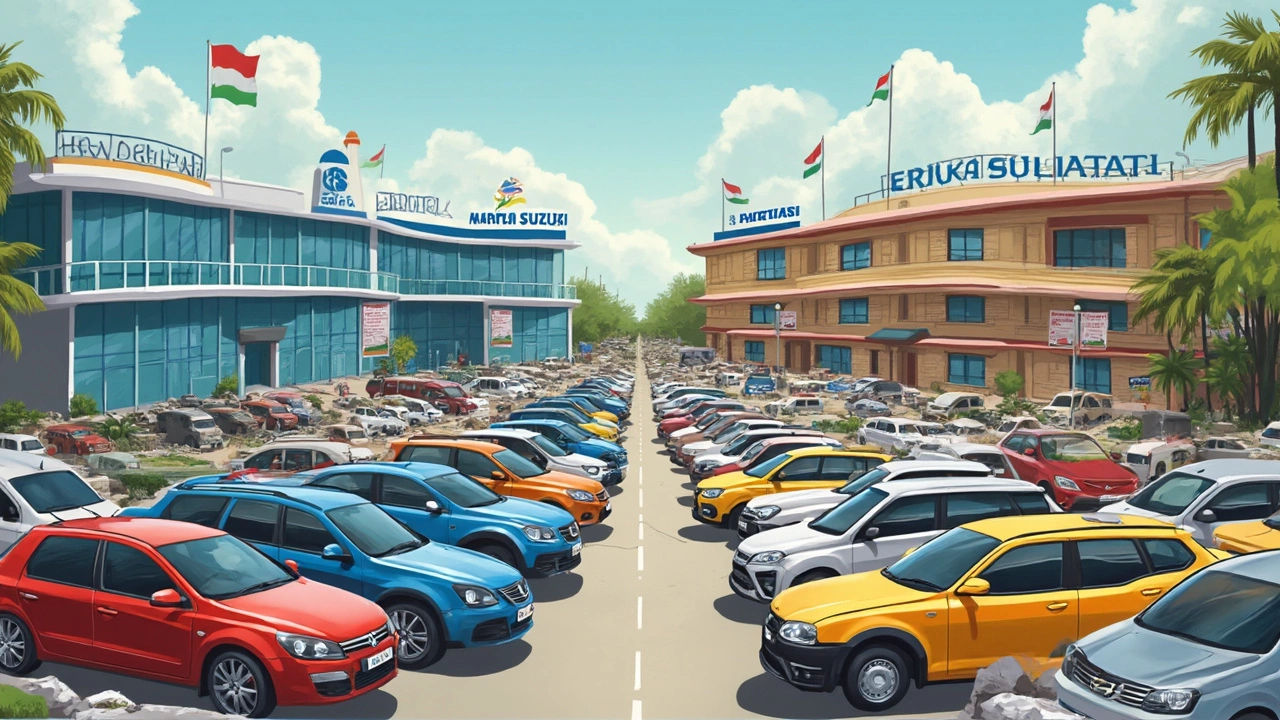
Tips for Buying Cars in Sri Lanka
If you’re shopping for Sri Lanka cars, there are a few things you really need to know before handing over any cash. Sri Lanka isn’t like India, where you can pick from dozens of locally made models at different price points. There are extra hoops to jump through here, and what you pay can be much higher than you expect—even for a used vehicle.
- Most models are imported. You’ll see Japanese, Indian, and even some European brands—almost never a “Made in Sri Lanka” vehicle.
- Taxes and import duties pack a punch. A small hatchback that might cost $6,000 new in India could end up over $12,000 in Sri Lanka, all because of high import taxes. So it pays to budget more.
- Watch out for reconditioned cars. A huge chunk of used cars here are “reconditioned” imports, mostly from Japan. These are basically second-hand cars that have been fixed up before hitting Sri Lankan soil. They’re legal, but you need to double-check the paperwork and history.
- Parts and servicing matter. If you pick a rare model, you might end up waiting ages or shelling out big bucks for spare parts.
- Ask about assembly. Some Indian brands are assembled locally. These can sometimes be slightly cheaper or have faster support since the parts are in-country.
| Popular Car Brands | Made/Assembled | Origin |
|---|---|---|
| Toyota | Imported / Reconditioned | Japan |
| Suzuki | Some Assembled Locally | India/Japan |
| Nissan | Imported / Reconditioned | Japan |
| Maruti | Imported / Assembled | India |
One dealership owner in Colombo put it best:
“People are surprised at the final price of a small car here. It’s all about the import taxes. My advice? Always add an extra 30% to your budget for hidden costs.”
And don’t forget, every car needs to be registered with the Department of Motor Traffic. If you’re looking at a reconditioned vehicle, make sure you check its registration and maintenance record. No one likes nasty surprises after they drive off the lot.
One last tip: If you want to save, keep an eye on currency fluctuations and government policy changes, since taxes and rules change a lot—sometimes overnight.
